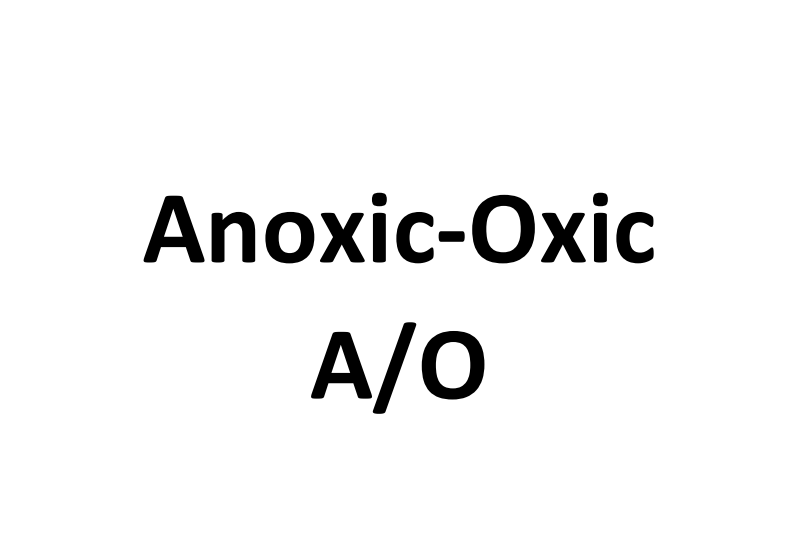12 Ways to Improve the Poor Denitrification Effect of A/O Process
In the nitrogen removal process of sewage treatment, A/O Process is widely used with its relatively simple and outstanding characteristics.
A/O Denitrogenation Process Principle
The A/O denitrogenation process is to connect the Anoxic Section in the front and the Oxic Section in the back together. The DO (dissolved oxygen) of section A is not greater than 0.2mg/L, and the DO of section O is 2 ~ 4mg/L.
In the Anoxic Section (Tank A), heterotrophic bacteria ammoniate (N on the organic chain or amino acid in the amino acid) and metabolize pollutants such as protein and fat to NH3-N. Under the condition of sufficient oxygen supply in the aeration tank, the nitrifying bacteria oxidize NH3-N to NO3 - (or NO2 -), and return to tank A through internal reflux control. Under the anoxic condition, the denitrifying bacteria reduce NO3 - to molecular nitrogen (N2) through denitrification to complete C, N O Recycle in the ecology to realize harmless treatment of sewage.
Control Measures to Improve Nitrogen Removal Effect
The operation process of A/O process is controlled to avoid sludge bulking and loss. The degradation rate of organic matters is high (90~95%), but the denitrification effect is poor. In order to improve denitrification effect, A/O denitrification process mainly controls several factors:
- 1.MLSS
Generally, it should be above 3000mg/L, and the denitrification effect of A/O system will be significantly reduced if it is lower than this value.
- 2.Ammonia Nitrogen Load
In the nitrification reaction, the ammonia nitrogen load (the actual amount of ammonia nitrogen is the sum of organic nitrogen and ammonia nitrogen, that is, Kjeldahl nitrogen TKN) is below 0.05gTKN/(gMLSS • d).
- 3.Sludge Load
In order to make the nitrifying bacteria multiply well, it is necessary to increase the MLSS concentration or increase the volume of the aeration tank to reduce the organic load and thus increase the sludge age. The sludge loading rate (COD/MLSS) shall be less than 0.10~0.15KgCOD/KgMLSS • d.
- 4.Mud Age
In nitrification reaction, the main factor affecting nitrification is the existence and activity of nitrifying bacteria, because the minimum specific growth rate of autotrophic nitrifying bacteria is 0.21/d; The minimum specific proliferation rate of heterotrophic aerobic bacteria was 1.2/d.
The specific proliferation rate of the former is much lower than that of the latter. To make the nitrifying bacteria survive and dominate, the sludge age is required to be more than 4.76 days; However, for heterotrophic aerobic bacteria, the sludge age is only 0.8d.
In the traditional activated sludge process, because the sludge age is only 2-4 days, the nitrifying bacteria cannot survive and occupy the advantage, and cannot complete the nitrification task.
- 5.Carbon Source of Aeration Tank Inlet Water
The BOD5 value entering the nitrifying tank shall be controlled below 80mg/L. When the BOD5 concentration is too high, heterotrophic bacteria will rapidly reproduce, compete with autotrophic bacteria for oxygen, and become the dominant bacteria, so that nitrifying bacteria will not dominate, and nitrification reaction will be reduced to collapse.
- 6.Internal Reflux
The size of internal reflux directly affects the denitrification effect. The increase of internal reflux increases the denitrification rate, but the increase of internal reflux increases the power consumption and operation cost. The internal reflux ratio is generally controlled at 300~500%!
- 7.Dissolved Oxygen in Digestion Tank
DO>2mg/L, generally sufficient oxygen supply DO should be maintained at 2~4mg/L to meet the requirements of nitrification oxygen demand. According to the calculation, 4.57g oxygen is required for oxidation of 1g NH4+.
- 8.Water Retention Time
Hydraulic retention time of nitrification reaction>6h; However, the hydraulic retention time of denitrification is 2h, and the ratio of the two is 3:1, otherwise the denitrification efficiency will decline rapidly.
- 9.PH and Alkalinity
The production of HNO3 in the nitrification process reduces the pH of the mixed solution, while the nitrifying bacteria are very sensitive to the pH, and the optimal pH for nitrification is 8.0~8.4. In order to maintain a suitable PH, corresponding measures should be taken. According to the calculation, the complete nitrification of 1g ammonia nitrogen (NH3-N) requires about 7.1g alkalinity (calculated by CaCO3).
The alkalinity (3.75g alkalinity/gNOx -- N) generated during denitrification can compensate about half of the alkalinity consumed by nitrification. The most suitable pH value for denitrification is 6.5~7.5, which is unfavorable if it is greater than 8 or less than 7.
- 10.Temperature
Nitrification reaction is 20~30 ℃, and almost stops below 5 ℃; The denitrification reaction temperature is 20~40 ℃, and the denitrification rate drops rapidly below 15 ℃.
Therefore, measures such as increasing the denitrification sludge age ts, reducing the loading rate and increasing the hydraulic retention time should be taken to maintain the denitrification rate in winter.
- 11.Influent Concentration
Nitrification reaction is to convert ammonia nitrogen into nitrite nitrogen, which is oxidized to nitrate nitrogen by nitrite bacteria. Some studies have shown that when the concentration of ammonia nitrogen is low, the ammonia oxidation rate and nitrite oxidation rate increase with the increase of concentration, and the nitrite oxidation rate increases rapidly. When the concentration increases to a certain extent, the reaction rate decreases.
- 12.Toxic and Harmful Substances
Toxic and harmful substances are lethal to all microorganisms and bacteria. Nitrifying bacteria are no exception. Toxic and harmful substances are introduced as follows: Toxic and harmful substances refer to bactericidal substances such as antibiotics, and also include substances that affect the activity of nitrifying enzymes, such as heavy metals and organic compounds. Try to prevent these substances from entering the system.
#QDEVU #WATERTREATMENT #WASTEWATERMENT #SEWAGETREATMENT



